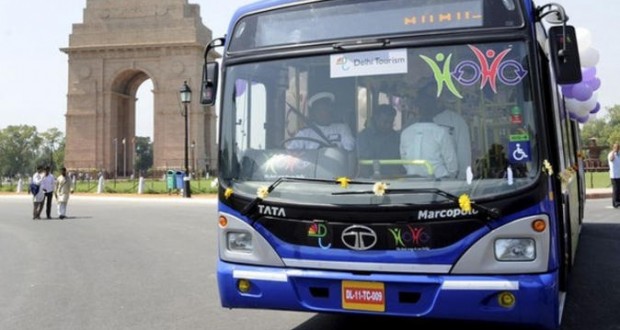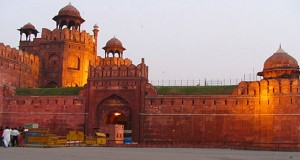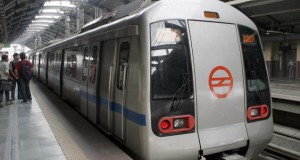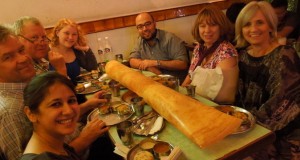Review Overview
2
Summary : Delhi's newest and most interesting shopping-centre is in the old Hauz Khas village
National Museum-Zoological Gardens-Purana Qila-Crafts Museum- Rail Transport Museum-Hauz Khas Village Delhi’s lesser-known sights don’t get seen often enough, partly because there are so many of them, but also be cause 2 days’ sightseeing is more than enough for most people. But some places are w ell worth a third day’s outing. To find all places on this tour open, go any day except a Monday or a Friday. Start with a ride down J a npath to the National Museum, just below the Rajpath crossing.
This is one of India’s newer museums (opened round 1950) and has one of the most comprehensive collections of Indian art and artefacts to be found anywhere. It has been recently enlarged, and is undergoing a change in layout as new galleries are opened and others expa nded. The ground floor has magnificent miniature paintings on silk and paper, copies of murals, stucco figures dating back to the 7th and 8th centuries, exhibits fro the Prehistoric and Indus Valley civilisations, and bronzes/sculptures from the Maurya, Gandhara and Gupta periods. On the first floor is an excellent Central Asian gallery. Rather less dusty and musty, the new wing has a fine collection of folk, cl assical and tribal music instruments. Open from 10 am to 5 pm (except Mondays) the museum shows good films on 2nd Saturdays and Sundays, at 11 am and 3 pm and has occasional lecture programmes. Another short ride (3 km, 2 miles) east brings you to the Zoological Gardens on Mathura Road (open 9 am to 5 pm, except Fridays).
Founded in 1959, this is one of the largest zoos in Asia, and the most important in India. A vast array of species including descendants of the rare white tiger of Rewa live here in acceptable surroundings, and you can wander round the large, open area for hours watching not only the many representative s pecies of India’s extensive fauna but also many species from other parts of the world, i ncluding a magnificent pair of jaguars. If you’re here in the autumn, you will witness large flocks of migratory birds. Above the zoo, to the north, there soars the old fort or Purana Qila, the broken shell of Sher Shah’s ex-capital. It is believed to have been erected on the site of the first Delhi, Indraprastha, and is worth a visit.
Enter the fort by the south gate to find the Sher Mandal, a small, red-sandstone octagonal tower the original purpose of which is unknown but was probably built by Sher Shah. It is chiefly remembered today as the place where Emperor Humayun, who had co nverted it into a library, tripped down the stairs on his way to prayer and sustained Mortals injuries. Just north of the tower, see Qal’a-i- Kunha Mosque, a fine Indo-Afghan structure of red-sandstone also incorporating marble, slate and coloured sto nework. Open from 8 am to 6.30 pm daily, the fort has a small Field Museum, housing a good collection of archaeological site recoveries. Set within the main exhibition grounds, Pragati Maidan, slightly to the north of Purana Qila is the National Han dicrafts and Handlooms Museum better known as the Crafts Museum. As a homage to the craftspeople and artists who keep alive India’s artistic tradition, the museum has been a great success.
The complex is made buildnig used for both permanent and special exhibitions. From September to April I cratspeople from throughout the country work at the museum displaying and selling their products which may vary from a clay pot to a sari that has taken a full month to weave. Open daily from 9.30 am to 5 pm. The museum has a small shop and an excellent book about its collection. A 5-km (3-mile) ride west to Shanti Path, Chanakyapuri, brings you to Delhi’s L venous Rail Transport Museum. This features a superb collection of old trains rolling stock, dotted around a pleasant garden compound. The exhibits include the charming 1908 Memorial Engine with its single steamroller wheel, the mammoth $U23 Bombay Mail with fog-lamp the size of a dinner table, and the elegant 1908 viceregal dining- coach with gilded wood-panelling interior (and baize-covered card Stables). At the back of the compound, there’s the showpiece Beyer-Garratt :l 3o5 cyaordms ofo gliealmvinegren majesty, with silver-rimed whels and vermilion piston shafts. Climb the hump-back bridge at the rear of the compound for the obligatory photograph. Then take in the museum, full of interesting brass engineplates from all over the world, lots of exotic silver and ivory dinner cutlery, and photographs illustrating the development of India’s historic rail network (some of the mountains cut through to lay track claimed the lives of 30% of the workforce). I here are some lovely model locomotives, including one of the Rocket itself, and don’t miss the prize exhibit—the skull of a wild elephant which charged a Calcuttabound train in 1894 and lost.
The train-driver kept one of the tusks; the other is in BTritish Muhseum. Keeen gricers can chose from a selection of original builders’ plates sold at the entrance. The museum is open 9.30 am to 5.30 pm (except Mondays). Admission is Rsl, and the extra Rs5 camera charge is worth it. Delhi’s newest and most interesting shopping-centre is in the old Hauz Khas village about 10 km (7 miles) south of Connaught Place. An old village adjacent to a deer park and the site of a great 13th-century tank built by Ala-ud-din Khilji, Hauz Khas has been absorbed by the southward spread of New Delhi. While remaining a village many of the buildings have been converted into chic and glitzy shops for Delhi’s elite and fashionable. On entering the village, the first shop you see is Dastkar, a sort of mini Cottage Industries emporium with traditional village crafts from throughout the country on sale. Other shops are more ‘high fashion’ outlets with expensive designer items. Some good restaurants have been opened (see below), including Delhi’s only jazz club. Walk through the village and explore the extensive ruins of the madras , or religious school, built in 1352 and Feroz Shah’s tomb nearby.





